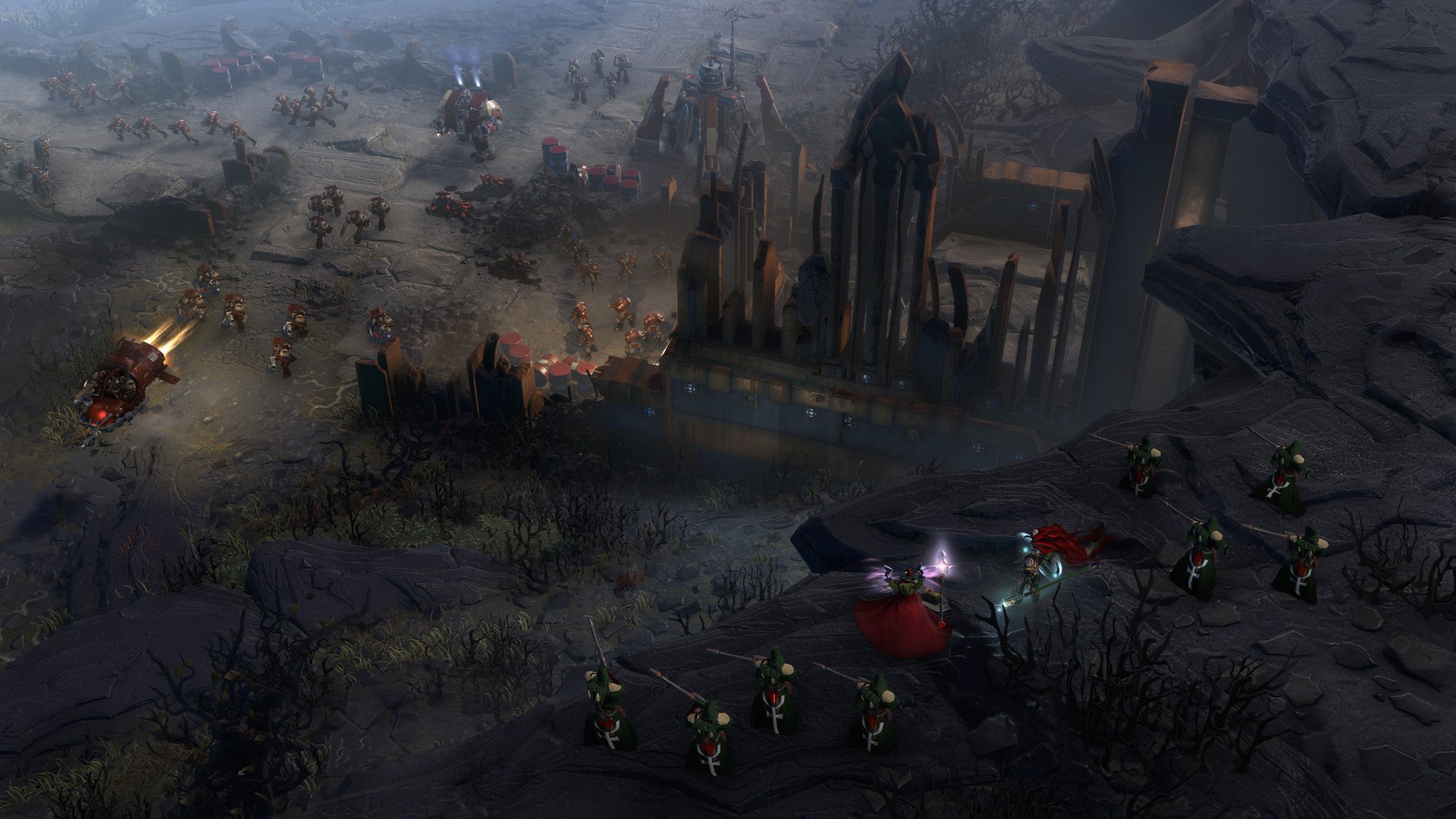Waaagh to the future
I’ve been playing Warhammer tabletop for nearly 20 years, and I’ve seen what feels like hundreds of games based on the property come and go. Some stick with me, like Total War: Warhammer. Others fall by the wayside and are forgotten like Fire Warrior.
But the Dawn of War series has been one of the most consistent sub-franchises of all. Even with some of the missteps in the third iteration, it’s still relevant.

Warhammer 40,000: Dawn of War III (PC)
Developer: Relic Entertainment
Publisher: Sega
Released: April 27, 2017
MSRP: $59.99
Since there’s been a lot of confusion as to whether or not Dawn of War III multiplayer has shifted into a MOBA, let’s clear that bit up — it’s not, and I say this as someone who plays a MOBA match nearly every day. But seeing as the developers even stated in the past it is “inspired” by them, you’re going to see some similarities.
Sure there’s a core to destroy now in multiplayer matches, but first and foremost, the modus operandi is that of an RTS. There’s base building, point capturing, and plenty of micromanaging and control group creation. It’s more like the first Dawn of War really, with a few streamlined concepts like enhanced heroes (elites) and stealth brush thrown in — things that have been done in plenty of RTS games before it, from Command & Conquer: Red Alert‘s Tanya and beyond. Elites need to be paid for with elite points, which you speed up by capturing points and building generators on top of said points, which you’ll need to constantly defend. There’s walkers as well, but their existence feels somewhat cheapened by elites (they can share the same category), as they have less abilities to work with and mechanically provide a lot of the same support.
That’s forgivable though as each and every elite is formidable, yet sports few enough skill shots to make them impactful without providing an overwhelming presence like MOBA heroes. It’s a delicate balance, but I like having elites, especially some of the more lore-heavy ones, in tandem with the base building system. With that in mind, the lack of variable win conditions in multiplayer (it’s always “blow up the core”) is something I’d love to see altered in a patch.
Mechanics like mass recalling, interconnected teleporation webways, and timed core invulnerability make for some cool comebacks, but ultimately they just filter back into the idea of destroying the core instead of tactically cutting off each building one by one (which you can still do, but if you’re in their territory, you may as well go for the win). I tested out some AI matches in addition to multiplayer pre-launch, across the 1v1, 2v2, and 3v3 modes. Eight maps is just enough to get me by, but after enough time has passed I can see myself wanting more.
Taking a closer look at the armies — Marines, Eldar, and Orks — Relic is basically riffing off of the launch choices from Dawn of War II, minus the Tyranids. Stylistically they’re very different, and if you were going to go with three choices, these are probably the ones you want. As per the actual lore Marines are basically ‘roided-up assholes that rely on functional tech, Orks operate with horde-like mentality with shoddy weaponry, and the Eldar are prim and proper mystics.
Mechanical differences range from the subtle (a few elites share the same abilities with only slight nuances) to drastic (Orks need to build towers to upgrade their army, and Eldar can warp buildings around at will). All three armies are wonderfully animated, which is a feat given the enhanced unit count. It’s always a treat to see the detail that goes into something as basic as summoning grunts, though I do wish you could zoom in a bit more.

Proper cover is gone (it’s relegated to a shield buff in certain locations now, though the Eldar can call upon their own version of it), but there’s still plenty of micro opportunities for each and every unit. You can toggle stances for melee and ranged attacks, use unique abilities like grenades or jump jets, queue up defensive or hold formations, and issue sequential commands for individual units — typical RTS staples. Every squad is also explained with a helpful series of tooltips, so even if you don’t partake in the 40K universe you can tell the difference between a heavy bolter and a lascannon. The unit build queue is also easy to read, as is creating multiple control groups. Dawn of War III is more accessible than past entries, but it doesn’t sacrifice its integrity to get there.
Multiplayer isn’t the only thing on offer, as there’s still a campaign mode that sprawls across the three aforementioned factions. You’ll jump from mission to mission as it follows the core narrative, spurred by the Eldar’s obsession with the Spear of Khaine, a “divine” weapon. Some are elite-centric and that’s fine (I liked the Nova missions in StarCraft II for the same reason), but because of that laser focus, you could argue that it takes multiple levels until it really ramps up into something exciting.
When it does get good, it can also get frustrating. Some later missions feel cheap in the sense that the CPU is kind of just throwing insurmountable odds your way without the level of tactical depth you’d expect from an RTS campaign. It’s also worth noting that when playing through the story mode I experienced some light glitches — things like units moving through walls even though they lacked an ability like jump jets — but nothing game-breaking or critical like crashes.

As far as long term goals go, playing just about any mode will earn you skulls to unlock more elites, which is all part of the rat race. It rubs me the wrong way that some of the more iconic characters are gated behind skulls, as are some individual abilities, but these gates never felt like they were outright ruining the game or even slowing the pace of any individual match since their base kits are well designed. As is the case with any Warhammer strategy fantasy there’s always more races and factions on my wishlist, but the deep faction/army painter is a good concession for now.
Warhammer 40,000: Dawn of War III takes a few steps back in time to make one step forward. It hearkens back to a lot of older design choices from the first game, and attempts to build upon other RTS conventions in the process. Not everything works (especially the strict adherence to the core conceit), but it’s still very much both a Warhammer and a Dawn of War joint.
[This review is based on a retail build of the game provided by the publisher.]


